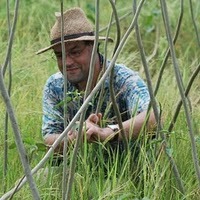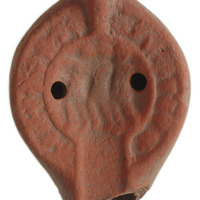
Pablo Arias
Related Authors
Dorian Q Fuller
University College London
Maurizio Forte
Duke University
Julian Thomas
The University of Manchester
Maria Nilsson
Lund University
Kristian Kristiansen
University of Gothenburg
Lynn Dodd
University of Southern California
Adriano Orsingher
Universidad Complutense de Madrid
Eszter Banffy
Hungarian Academy of Sciences
Viacheslav Kuleshov
Stockholm University










Uploads
Papers by Pablo Arias
The project will reach new audiences improving access to cultural heritage and providing greater opportunities for people of all ages, abilities and backgrounds to become involved, learning about their heritage and encouraging a sense of place and belonging through an understanding of our shared past. Moreover, it will build links between schools and groups of the three partner countries to continue to learn and exchange information about our shared cultural heritage.
The project will focus on an under-represented aspect of our shared heritage: archaeological evidence from coastal and marine sites. Our coastlines and waters are rich in sites of national and international interest, from unique submerged landscapes providing evidence from a time when the UK and Europe were linked, to shipwrecks, harbours and ports containing evidence of trade and networks between the partner countries. Due to their nature, however, such sites can often be overlooked as ‘out of sight, out of mind’. The project will work to raise the profile of this unique and finite resource, encouraging people to become involved in their cultural heritage.
and eastern Asturias and western Cantabria in northern Spain. Despite a long tradition of research on this
archaeological phenomenon, little information has been acquired about domestic structures. Even locations
of living areas have been poorly understood. Dealing with this problem in northern Spain has been one of the
main aims of COASTTRAN, a research project that has investigated the transition from the Late Mesolithic to
the Neolithic on the Atlantic coast of south-western Europe. This paper presents the results of the programme
that systematically investigated this issue. The programme included a detailed geomorphological assessment
of the most promising areas, magnetometry survey, sedimentological cores, and archaeological test pits in
two selected open-air sites: El Alloru and Sierra Plana de la Borbolla. The preliminary results of this research
are presented here, and implications for the study of the Mesolithic of northern Iberia are discussed.
by vertical shafts. La Garma houses an exceptional archaeological heritage that includes magnificent examS.
Cuezva, et al. 2016. Investigación aplicada a la conservación preventiva del sistema kárstico de La Garma (Omoño, Ribamontán al Monte...
308
ples of Palaeolithic cave art and settlement floors in an amazing state of preservation, as well as valuable evidence of
symbolic behavior of Pleistocene hunter-gatherers. Its heritage values have made it worthy of their inclusion on the
World Heritage List of UNESCO in 2008. The conservation of this site is a priority and it has been recently launched
a program of preventive conservation. The main objective of this project is to achieve a better knowledge of the underground
ecosystem and the impact of human presence in the underground microenvironment, both for purposes
of sound management and research of the cavity as well as for a hypothetical opening to the public in the future.
The underground karst system of La Garma, with various levels of galleries and directly connected with active water
table, involves a complex movement of matter (water, air masses and aerosols) and energy. To achieve an adequate
knowledge of environmental dynamics, our research group is conducting a multidisciplinary study since February
2015 by employing specific methodologies for each interface involved: microclimate (cavity in three internal levels
of karst and external atmosphere), hydrochemical (water infiltration and condensation), isotope geochemistry (air,
soil) and microbiological contamination (air, soil, rock). Early data show very marked seasonal changes in the general
ventilation pattern of the cavity (air renewal in winter) and areas with different microenvironmental stability, including
sectors with a greater degree of isolation from the regime of general circulation of air in the cavity.